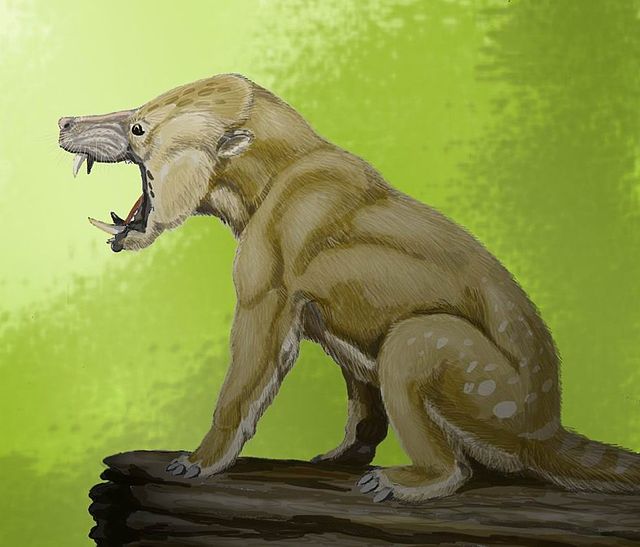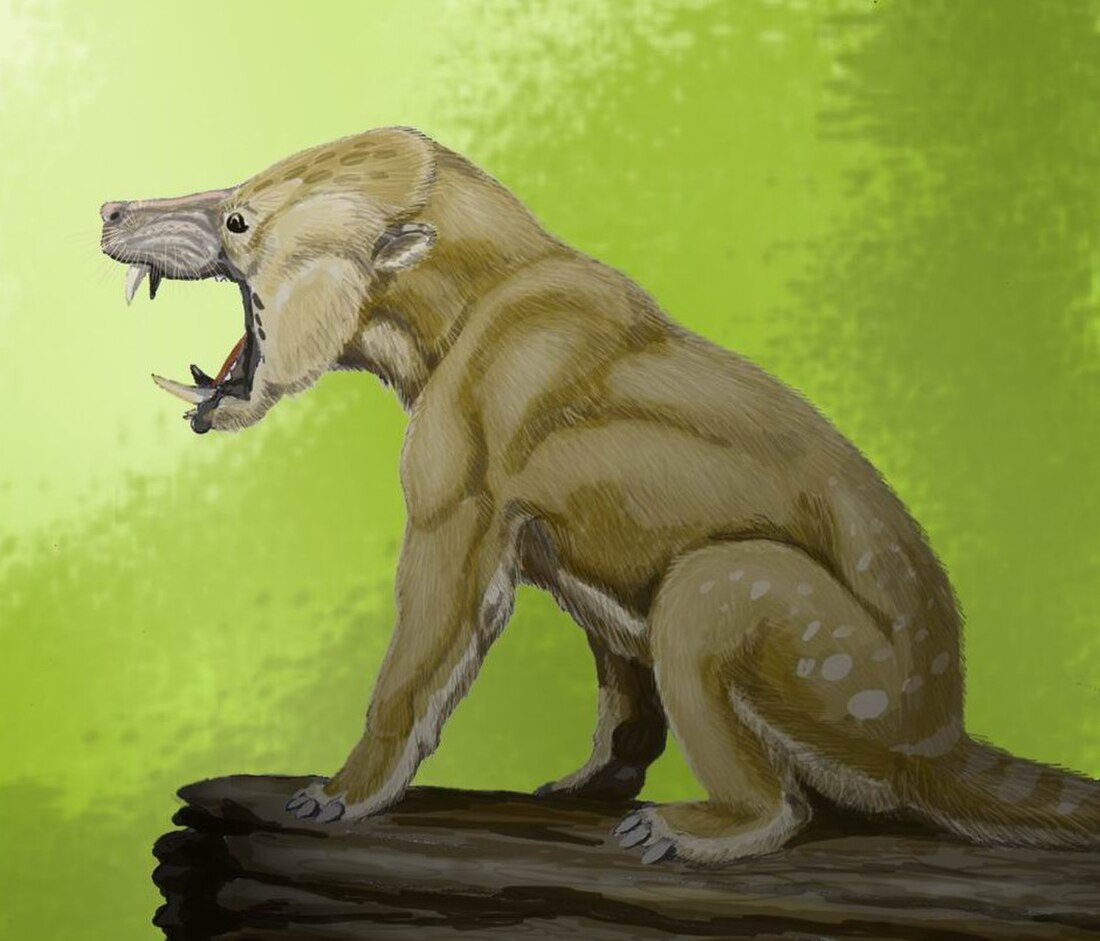Top Qs
Timeline
Chat
Perspective
Condylarthra
Grouping of extinct mammals From Wikipedia, the free encyclopedia
Remove ads
Condylarthra is an informal group – previously considered an order – of extinct placental mammals, known primarily from the Paleocene and Eocene epochs.[1] They are considered early, primitive ungulates and is now largely considered to be a wastebasket taxon, having served as a dumping ground for classifying ungulates which had not been clearly established as part of either Perissodactyla or Artiodactyla, being composed thus of several unrelated lineages.[2][3][4]

Remove ads
Taxonomic history
Summarize
Perspective
Condylarthra always was a problematic group. When first described by Cope 1881, Phenacodontidae was the type and only family therein. Cope 1885, however, raised Condylarthra to an order and included a wide range of diverse placentals with generalized dentitions and postcranial skeletons. More recent researchers (i.e. post-WW2) have been more restrictive; either including only a limited number of taxa, or proposing that the term should be abandoned altogether.[5] Due to their primitive characteristics condylarths have been considered ancestral to several ungulate orders, including the living Artiodactyla, Cetacea, Perissodactyla, Hyracoidea, Sirenia, and Proboscidea, as well as the extinct Desmostylia, Embrithopoda, Litopterna, Notoungulata, and Astrapotheria.[6]
Prothero, Manning & Fischer 1988 delimited condylarths as those having the following characters, but lacking the specializations present in more derived orders:[5]
- superior ramus of stapedial artery shifted to petrosal or lost
- mastoid foramen lost
- bulla if present composed of ectotympanic
- relatively bunodont teeth with low cusp relief
- trigonids of lower molars shortened anteroposteriorly
- large, posteriorly projecting hypoconulid on M3 (lower third molar)
- head of astragalus is short and robust
Remove ads
Evolutionary history
Summarize
Perspective

The disappearance of the non-avian dinosaurs opened up an ecological niche for large mammalian herbivores. Some condylarths evolved to fill the niche, while others remained insectivorous. This may explain, in part, the tremendous evolutionary radiation of the condylarths that we can observe throughout the Paleocene, resulting in the different groups of ungulates (or "hoofed mammals") that form the dominant herbivores in most Cenozoic animal communities on land, except on the island continent of Australia.
Among recent mammals, Paenungulata (hyraxes, elephants, and sea cows), Perissodactyla (horses, rhinoceroses, and tapirs), Artiodactyla (pigs, deer, antelope, cows, camels, hippos, and their relatives), Cetacea (whales), and Tubulidentata (aardvarks) are traditionally regarded as members of the Euungulata.[1][7] Besides these, several extinct animals also belong to this group, especially the endemic South American orders of ungulates, (Meridiungulata). Although many ungulates have hooves, this feature does not define the Euungulata. Indeed, some condylarths had small hooves on their feet, but the most primitive forms are clawed.
Recent molecular and DNA research has reorganised the picture of mammalian evolution. Paenungulates and tubulidentates are seen as afrotherians, and no longer seen as closely related to the laurasiatherian perissodactyls, artiodactyls, and cetaceans,[8][9] implying that hooves were acquired independently (i.e. were analogous) by at least two different mammalian lineages, once in the Afrotheria and once in the Laurasiatheria. Condylarthra itself, therefore, is polyphyletic: the several condylarth groups are not closely related to each other at all. Indeed, Condylarthra is sometimes regarded as a 'wastebasket' taxon.[4] True relationships remain in many cases unresolved.
In addition to meridiungulates and living ungulates, a condylarthran ancestry has been proposed for several other extinct groups of mammals, including Mesonychia[10] and Dinocerata.[11]
Remove ads
Taxonomy
- Family Arctocyonidae (possibly polyphyletic assemblage)[12]
- Family Periptychidae
- Family Hyopsodontidae (now established as within Perissodactyla)[13]
- Subfamily Tricuspiodontinae
- Genus Litomylus
- Genus Paratricuspiodon
- Genus Tricuspiodon
- Genus Aletodon
- Genus Decoredon
- Genus Dipavali
- Genus Dorraletes
- Genus Haplaletes
- Genus Haplomylus
- Genus Hyopsodus
- Genus Louisina
- Genus Microhyus
- Genus Midiagnus
- Genus Oxyprimus
- Genus Palasiodon
- Genus Paschatherium
- Genus Utemylus
- Genus Yuodon
- Subfamily Tricuspiodontinae
- Family Mioclaenidae
- Family Phenacodontidae (established as stem-Perissodactyla)[14]
- Subfamily Meniscotheriinae
- Genus Ectocion
- Genus Meniscotherium
- Genus Almogaver
- Genus Copecion
- Genus Eodesmatodon
- Genus Phenacodus
- Subfamily Meniscotheriinae
- Family Pleuraspidotheriidae[15]
- Genus Hilalia
- Genus Orthaspidotherium
- Genus Parabunodon
- Genus Pleuraspidotherium
- Family Didolodontidae (stem-Meridiungulata)
- Family Sparnotheriodontidae? (Litopterna)
- Genus Tingamarra? (non-descript therian mammal)
- Genus Protungulatum (either non-placental eutherian or basal artiodactyl).[16]
- Genus Kharmerungulatum (a zhelestid[17])
See also
Notes
References
External links
Wikiwand - on
Seamless Wikipedia browsing. On steroids.
Remove ads
